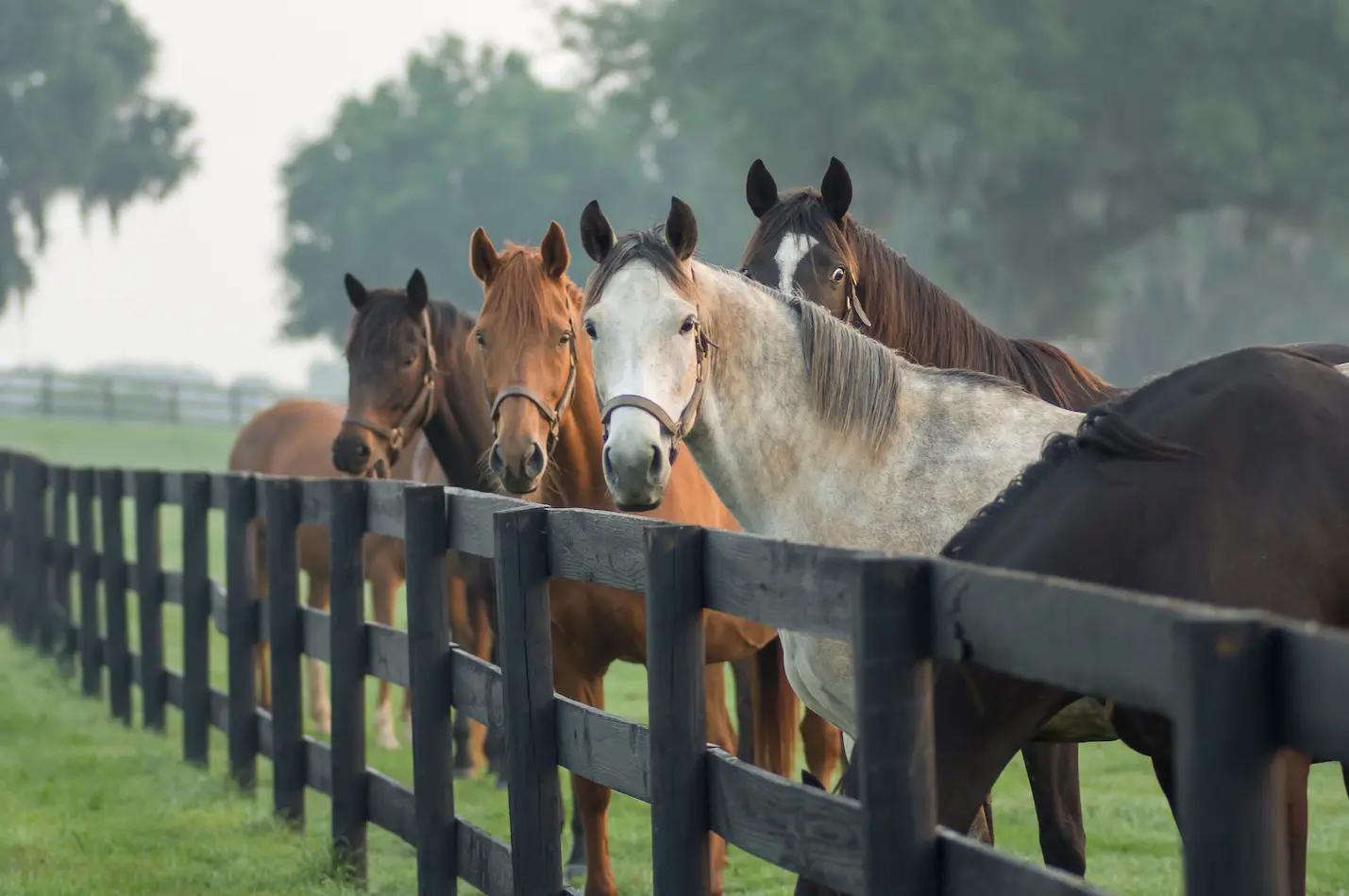Unlike many types of colic, sand colic is caused by a well-known culprit: a build-up of dirt or sand in the stomach. While most horses won’t intentionally ingest sand, grazing or eating hay from sandy soil can cause it to build up in the intestinal tract, causing sand colic, or impaction colic. This type of colic is relatively rare, and generally appears in the southwest or other areas of the country where the soil is sandy — but a serious case can result in a costly surgery to remove the build up of material.
Many horse-owners swear by a monthly “purge” to pass the sand via the GI tract and out with the manure. Psyllium, a high-fiber product used in human laxative products like Metamucil, is a popular choice for these so-called purges. Its fans claim psyllium swells up in the stomach, collects the sand and moves it through the digestive tract to be passed with a horse’s manure. While it does add fiber to a horse’s diet and absorbs liquid in the stomach, it’s a myth that feeding psyllium can help prevent sand colic by displacing a build-up of sand. Much like carbo-loading to avoid a hangover is a myth, the research doesn’t support the theory that loading a horse up with fiber helps absorb or purge sand from a horse’s system.
How Sand is Introduced to a Horse’s System
Horses pick up sand when they eat hay from the ground or graze in sandy areas. They can also ingest it if allowed to eat a pasture all the way down to the grass’s roots, as they’ll naturally pull the dirt-covered roots up with the shoot. While horses that live in places like Arizona and other southern states are most prone to ingesting sand, the problem isn’t limited to these areas.
Why it’s a Problem
Some horses live in sandy areas and never colic. Other horses suffer from irritation caused by the sand passing through the digestive tract, leading to diarrhea and weight loss. Sand can also build up in the intestine, impairing digestion and causing more sand to accumulate or block the intestine or colon, causing colic.
Why Psyllium Isn’t the Answer
While feeding psyllium does have a laxative effect, it doesn’t prevent the irritation caused by sand passing through the digestive tract. Studies also show that it may have little or no effect on sand that has already built up in the colon, and that it may not provide enough fiber to have a positive effect. A study conducted at the University of Illinois reported that ponies dosed with psyllium in an attempt to remove sand were not any more efficient at sand removal than ponies given a control diet. They concluded that psyllium had no apparent effect on sand removal from the horse’s large intestine.
Prevent Sand Colic with Proper Care and Nutrition
The best approach to avoiding sand colic is through proper animal husbandry. If you live in a sandy area or know that your horse has had trouble with sand build-up in the past, feed in hay nets, mangers or feed racks. Use a rubber mat under feeding areas to catch the feed that will inevitably fall out of the manger or buckets, and carefully monitor pastures so you can remove horses from overgrazed areas. And always provide plenty of fresh water, as dehydration can make an impaction worse.
Finally, prioritize fiber — naturally. That means providing frequent turnout for your horse, feeding as much free-choice hay as is practical for your horse, and mixing high-fiber options like beet pulp and chaff into your horse’s feed. Horses need to eat constantly — and prioritizing high-fiber options fed through a normal diet can help a horse’s system be as efficient as possible at eliminating sand and other foreign bodies. The University of Florida tested four means of sand removal: 1) hay fed at 1.5% of body weight, 2) hay fed at 2.5% of body weight, 3) hay fed at 1.5% of body weight plus psyllium fed in a single daily dose and 4) hay fed at 1.5% of body weight with psyllium fed twice daily. The results indicated that feeding large amounts of hay (2.5% of body weight, 25 lbs. for a 1000 lb. horse) uniformly produced the largest sand output. Other experiments studied feeding wheat bran and dosing with mineral oil as methods to remove sand. Both protocols proved ineffective for sand removal.
In summary, there does not appear to be any advantage to feeding or treating with psyllium, bran or mineral oil over a basic hay diet for removal of sand from the digestive system of horses.
So, feeding psyllium to prevent or treat sand build-up is a myth. Feeding a high-fiber diet, providing plenty of water and doing your best to eliminate sand from feeding areas is much more effective. Much as most of us prefer to avoid taking laxatives if not necessary, proper care and a high-fiber diet can go a long way in helping horses have healthy, well-functioning GI tracts — without the need for psyllium.



